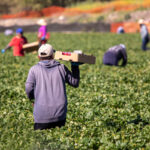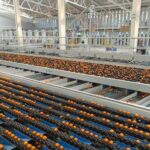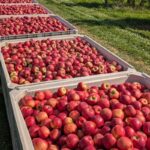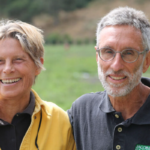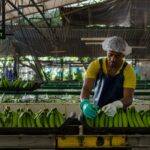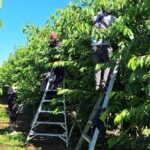Nanobubble technology grows in popularity, offering numerous benefits for horticulture

Amid heightened focus in the agricultural industry on sustainability, food safety, climate change, reduction of chemical use, and generally producing more with less, nanobubble technology has been growing in popularity.
Nanobubbles are extremely small gas bubbles - no more than 100 nm in diameter and 2500 times smaller than a grain of salt - that have several unique physical properties that offer numerous benefits across many industries.
They have been researched for many years in a variety of applications including medicine, water treatment, cosmetics and textile industries. Recently nanobubbles have been used in agriculture to improve water quality, support beneficial biology and produce healthier roots and plants.
Warren Russell, CCO and co-founder of California-based Moleaer - one of the world's leading nanobubble companies - said the technology offers a range of benefits for both greenhouse and field horticultural crop growers including improved quality and vegetative growth and yields in crops.
He explained that Moleaer's technology is based on a gas infusion method it developed in 2016. In 2017, the company commercialized its technology with its pioneering industrial scale nanobubble generators.
"We were conceptualizing ways that we could create a scalable and reliable technology that was more efficient at supersaturating water with various kinds of gas. In agriculture our nanobubbles increase dissolved oxygen to improve plant and root health, and also produce added benefits including reducing algae, suppressing pathogens and promoting beneficial bacteria with a plug and play, chemical-free solution," Russell told FreshFruitPortal.com.
The team had been following nanobubble technology for a while in different industries and had noted that most of the systems in the market were focused on laboratory-type clean water conditions.
"We just didn't see how that was going to be able to work consistently in real-world conditions - on farms, in outdoor environments. We wanted to create something we could provide these industries that was easy to install, capable of treating a variety of water qualities and scalable to higher flows," he said.
The "turn-key" system the company developed includes all the controls and features that "really give the system this autonomous, simple to use, low-maintenance operation, which is what everybody's looking for," he said.
Benefits across the board
In horticulture, the main aim of the technology is to elevate the oxygen content and improve the quality of irrigation water, whether it be in storage tanks for use in greenhouses, or reservoirs or ponds for fields.
The gas from the nanobubbles dissolves over time into the water, and the benefits of this are many-fold. For one, oxygen nanobubbles help remove algae and reduce the amount of organic carbon in the water.
"It can significantly improve the clarity of the water, which is actually one of the most impressive things this technology can do. The benefits of cleaner irrigation water can have a big impact on plant health and development," Russell said.
An oxygen-rich environment around plant roots also helps with nutrient absorption, plant growth and disease suppression. North America has been the company’s primary growth market where over 50 greenhouses or indoor farms have installed its technology. In 2019, the company opened a sales office in the Netherlands, a world leader in greenhouse production, which has been quick to adopt Moleaer’s nanobubble systems. The technology has also been spreading to other agricultural countries around the world.
In South America - into which Moleaer has recently made its first foray in horticulture through a commercial relationship with Chile-based Ag-Tech company Kapicua - these benefits are already being enjoyed by a diverse group of growers.
The technology is being used for numerous crops including blueberries, table grapes, tomatoes, avocados, cherries and citrus. Russell said that there has been an improvement in vegetative growth, which can result in earlier harvest time.
"Specialty crop growers can potentially reach their harvest weight sooner, so they have an opportunity to get to market faster. In some cases, we’ve seen up to 25% faster growth. In the case with blueberries, we saw better sizes, ranges and grades of fruit," he said.
Another important benefit is improving food safety, as the risk of crops becoming infected with pathogens like E. coli or Salmonella can be reduced. This is because when stored water is not well oxygenated or treated, the water is more prone to harboring and then spreading the pathogen onto the crops via the irrigation system.
"What we've demonstrated is by recirculating and treating that water with nanobubbles - making sure it's well maintained - you can reduce the presence of pathogens in irrigation water that can either cause root diseases or be a food safety risk," he said. However, he emphasized that nanobubbles should not be used as a replacement for other food safety measures.
He added that technology provides an excellent return on investment, whether a nanobubble system is purchased or contracted as part of a service plan offered by certain partners. Considering the profit boosts growers can achieve thanks to yield or grade improvements, or being the first to market, the cost is relatively low.
All these factors have led Moleaer to see strong demand all around the world. Growth remains high in its more established markets like North America and Europe, and Russell said the company has had an "exceptionally good response" in South America since the recent expansion.
Popularity among all growing schools
Greenhouse growers remain a large part of Moleaer's customers, but Russell said that companies growing in soil perhaps stand to benefit the most from the technology.
"That's not just because our systems provide a non-chemical means of boosting plant growth, but it's also very low cost, easy to operate and maintain, and sustainable. I think people have really gravitated to that concept of being low cost but having a multitude of benefits that support their other inputs," he said.
And as well as appealing to organic and greenhouse growers, the technology is also popular among conventional growers.
It's clear that nanobubble technology has a long and bright future in agriculture. Moleaer recently launched its fifth-generation Neo generator for greenhouses - an area in which the company is already well established - and it is now looking to expand into other crop types and cultivar methods.
"For us, the end game is being able to provide an effective and convenient turn-key solution for outdoor specialty crops," he said. "We’ve seen the benefits now across multiple crop varieties and soil types. It is an underdeveloped market for a technology like ours.”
"The next product that we would probably put into development is a nanobubble system designed for outdoor growers. We are currently working with a handful of these growers to learn about their needs to ensure we develop the right product for their application.”
















